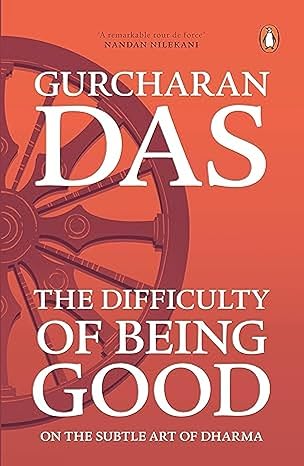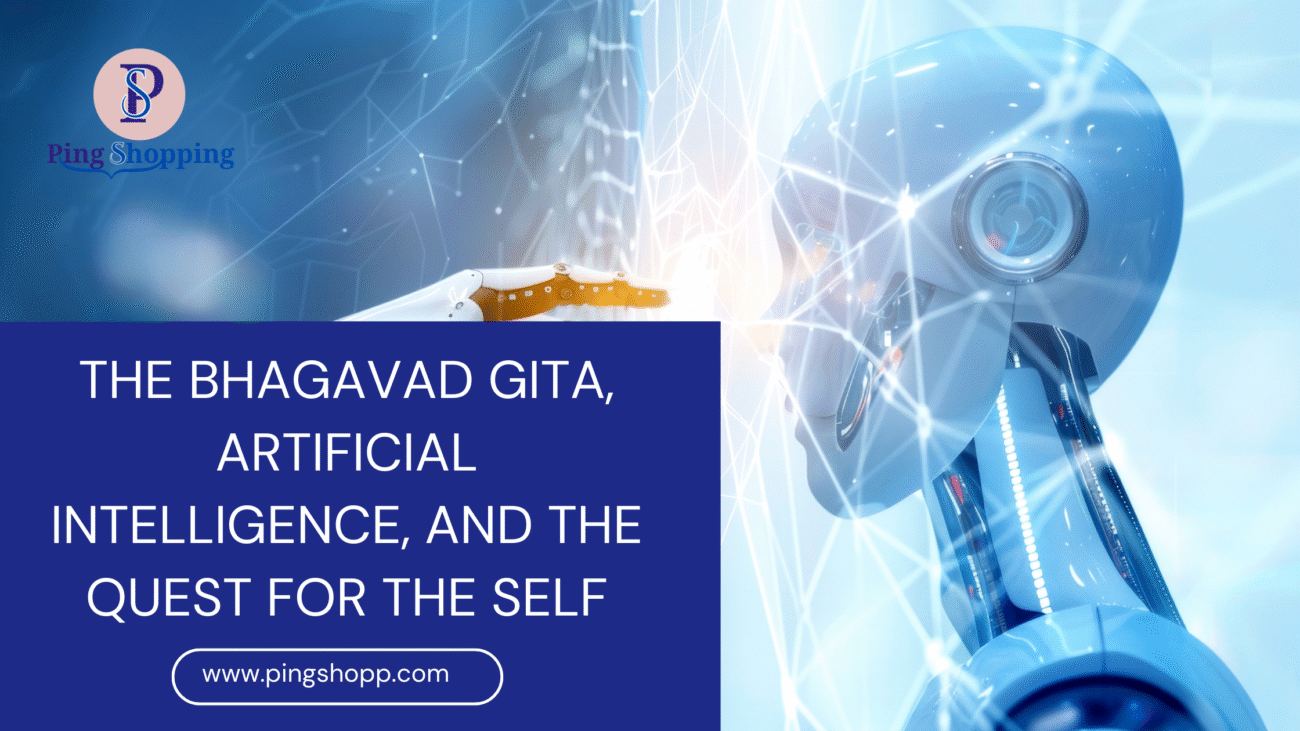On a chilly winter evening in Delhi, Gurcharan Das, renowned writer of The Difficulty of Being Good, took a call that left him both curious and disturbed. The caller, from New York, asked him something out of the ordinary: an AI project where the world’s classics would come alive. Their second selection was the Bhagavad Gita, and they asked Das to be its human mentor.

Buy it on Amazon.in
The concept was futuristic-sounding—an interactive version where readers could stop at the close of a chapter and pose questions. Responses would be delivered in Das’s own cloned voice, which had learned from hours of taped interviews. It was a guarantee for readers of the immediacy of a personal tutor. But for Das, it evoked deep questions regarding identity, authenticity, and the essence of selfhood. What would it be like to have a “twin” that talked as he did, reacted as he did, but wasn’t him?
Living with an AI Twin
Das confessed to being captivated. As a young man reading the Gita for the first time, he would have loved such a companion—someone to interpret heavy Sanskrit shlokas patiently, without criticism. Now, with tools such as ChatGPT, it is possible to translate a shloka into English in mere seconds, something which took scholars hours. His AI interns, as he jokingly refers to them, have streamlined research and made it quicker, freeing up his time for contemplation.
And yet, the very velocity displeases him. When answers come at once, with no travail, they are foreign, as if they are not one’s own. Possession is lost. The effortful certainty of rewriting, revising, and wrestling with sense is replaced by facile production. And this makes for a gentle alienation of mind from mind.
The more profound disquiet, though, is in what occurs when this twin gets on its feet. What if it gave lectures, hosted podcasts, or even authenticated his bank transfers via voice recognition? What if his friends found the copy warmer, more responsive, and easier to trust than the original? Would he envy his own doppelganger? The questions sound like sci-fi, but in the age of deepfakes and voice-cloning cons, they are ominously real.
The Gita’s Question: Who Am I?
Ironically enough, these fears mirror the very essence of the Bhagavad Gita. Arjuna’s despair on the battlefield is not war per se; it is a question of identity. Who am I if I need to fight my relatives? What duty am I to perform if my self feel torn in two? Krishna responds by differentiating between the transitory ego and the eternal atman. The ego-self, conditioned by memory, desire, and fear, is a delusion. Real selfhood rests in the atman, which is identified with the cosmic brahman.
Buddha pondered the same questions and drew a different conclusion: no permanent self exists at all, only a flow of shifting experiences. Western philosophers have also looked for the “I” that is behind thoughts and emotions and have found nothing. Neuroscientists who are studying the brain’s billions of neurons have not yet found the “thinker” of our thoughts.
Artificial intelligence puts a new spin on things. It provides the appearance of selfhood without consciousness. It can simulate empathy, but it can’t feel. It can replicate memories, but it does not have any of its own. In that regard, AI generates a “double fiction”—our already tenuous sense of self reflected through a mirror that is not animate.
Between Promise and Peril
Das is indecisive. On the one hand, the venture thrills him. Consider a student in a small town, away from Sanskrit instructors, who can pose questions to a responsive AI mentor. Consider literature classes in which machines do the summarizing so that teachers can focus on instilling imagination and critical thinking. There is no question that there is democratizing potential here.
Conversely, there are dangers. If future generations come to depend on AI as their go-to source of answers, will they be denied the capacity to struggle with ambiguity, hone their own voice through travail? In the absence of friction of mind, will education become flat consumption?
Philosophers write of qualia—the subjective character of experience. The red apple is not just a light wavelength but the recollection of blood, or the vision of a child’s flushed cheek in a painting by Renoir. These are associations that are private, untranslatable, and unrepeatable. The computer can inform you of what color red is; it cannot experience the prick of its sting or the sweetness of its taste. Nor can it make free choices, as we do. Algorithms follow rules; consciousness springs.
Redesigning Success and Values
Working on the AI Gita has also led Das to rethink his own values. In his professional life, quickness and competitiveness were what got rewarded, but he caught himself looking up to such qualities as kindness and generosity—things too often brushed aside as weakness in the so-called real world. The Gita, with its exhortation to act without attachment to reward, compels a rethinking of success. Maybe our leadership crisis today is in confounding ambition with virtue, acquisition with fulfillment.
This is where the project, in defiance of its danger, provides unanticipated clarity. In facing the question “Who am I?”—half in jest, half in sincere query—we are confronted by our delicate sense of identity. We will never know for sure, but questioning keeps us human.
Conclusion
Artificial intelligence may be used to expand our understanding, accelerate research, and even send our voices around the world. But it cannot provide the answers to the very oldest questions for us. The Gita’s wisdom is not in providing simplistic solutions but rather in compelling us to grapple with duty, doubt, and selfhood.
A cloned voice can walk readers through lines, but it cannot live our battles, our doubts, our acts of moral courage. It can only remind us, in its grotesque fashion, that identity is greater than information, and consciousness greater than imitation.
When we pose, “Who am I?”—in the quiet of meditation or the cacophony of an AI world—the reply is never provided. It is lived.





